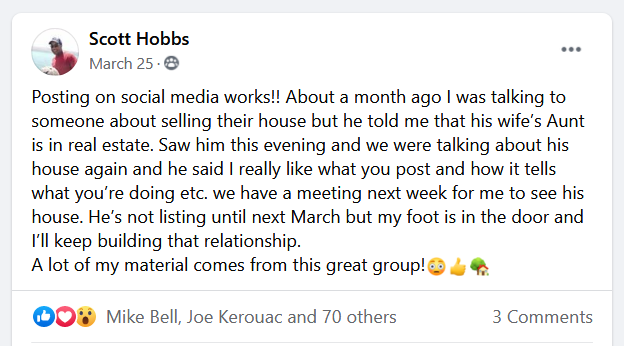
News about the Real Estate Market Is Hurting Your Business (But You Can Use It to Your Advantage)
It’s almost impossible to avoid being exposed to news nowadays. Besides being on TV and radio 24/7, people get notifications on their cell phones, in


The ultimate guide for tackling most household emergencies with ease
What do newborn babies and homeownership have in common? Neither come with an owner’s manual. And that’s too bad, because as a homeowner you’ll inevitably find yourself in a dicey situation from time to time.
‘Wingin’ it’ is always an option. So is shelling out wads of money to local home contractors. But your best bet is to have at least a rudimentary knowledge of how to tackle home repairs yourself. This way you can save yourself time and money when a home repair emergency rears its ugly head.
Hat tip to the fine folks at This Old House. This is a slightly altered version of their original article.
More times than not, a failed washer inside a handle is the culprit. To replace the washer, turn off the water supply valve under the sink. Stuff a rag in the drain so you don’t lose parts, then take the handle apart. Pop the screw cover on top, remove the screw, and pull off the handle. Use a wrench to disassemble the stem, and line the parts up on the counter in the order they came off, so you know how it goes back together. Examine rubber parts or plastic cartridges for cracks, and take the offending piece to the hardware store for an exact replacement. Reassemble the parts you’ve laid out, in reverse. Then revel in the ensuing peace and quiet.
For more detailed diagrams, check out Fixing a Leaky Faucet.
 Pin
PinClarence Yuzik, aka The Fridge Doctor, has two words for you: Magic Sliders. Put these little plastic disks under the fridge’s front feet (you can lever them off the floor with a long pry bar), then pull. Most refrigerators have wheels in the back, so the whole unit should glide forward effortlessly.
 Pin
PinA stomp on a pointed shovel, that’s easy—and so’s electrocuting yourself when you slice into a buried power line. Which is why, says This Old House landscape contractor Roger Cook, any prospective hole-digger should first call 811 to notify the local utilities in your area. They’ll send someone out to mark any lines you have (and possibly save you from getting buried yourself).
 Pin
PinA stud finder is a handy tool to keep around the house, but let’s face it — you probably don’t own one. No worries, though, because you can use deductive reasoning to find the right spot to drive that nail into the wall. Most studs are placed at 16-inch intervals, so once you know where one is, you can usually find the rest.
Start at a corner, where there’s always a stud. Or take the cover plate off an electrical outlet and find out on which side it’s mounted to the stud. From there, measure 16, 32, 48 inches, and you should hit a stud at each interval. Eliminate guesswork by using a thin bit to drill a test hole at the top of the base molding, which you can easily repair with a dab of caulk.
 Pin
PinHit the 7-Eleven before you call that $100-a-visit locksmith. Some WD-40 sprayed into the keyhole will lube the mechanism quickly. If that doesn’t do it, you may have a broken spring or tumbler—and need that pro after all. If so, keep the new lock from locking up by giving it a yearly spritz of long-lasting Teflon spray.
 Pin
PinDespite your worst nightmares, you won’t hear a distinct munching sound. And these guys don’t hide in plain sight, so you need to scout out places where wood framing is exposed, like crawl spaces. Inspect them for raised, branch-like tubes that, when broken open, reveal cream-colored or yellowish insects. Also, check where siding meets the foundation for salt-size droppings or tiny clumps of dirt next to pinholes. If you spot even one, you need a licensed and bonded exterminator to squash those tunneling bugs. To learn more, check out Common Bug Killers and Their Advantages and Disadvantages.
 Pin
Pin“Chemicals rarely clear a stoppage—they only make a small hole,” says TOH plumbing and heating expert Richard Trethewey. “A full stoppage requires mechanical clearing.” Remove the stopper and block off overflow holes. With water in the bowl—the water puts more pressure on the clog—plunge with a flat-faced plunger. If that’s not enough, get under the sink and take off the trap to see if that’s where the clog is lodged. If the blockage is deeper, rent yourself a hand snake. Slowly push the coil down the drain, carefully twisting, pulling, and pushing when you hit the blockage. If the snake fails, then the still waters truly run deep. Call a drain-clearing service to get things flowing.
Get more details by reading Clear Any Clogged Drain.
 Pin
Pin
(Shh, our secret)
Show your sphere your an expert. We have over 2100 articles covering every real estate topic your audience will love.
Position yourself as a real estate authority!
Real estate + topical events — the perfect match!
Become the bearer of good vibes!
Because hey, everyone loves to laugh!



Get our weekly email that makes communicating with your sphere on social actually enjoyable. Stay informed and entertained, for free.

It’s almost impossible to avoid being exposed to news nowadays. Besides being on TV and radio 24/7, people get notifications on their cell phones, in

Most people looking for info on how to become a real estate agent are just wanting to learn how to get licensed and, ultimately, “hired”

Landing yourself a listing appointment is hard enough, but then you still have to nail your presentation in order to walk out of it with

When you hand someone your business card, you’re giving them a small, but important introduction to who you are. Much like resumes and cover letters,

At some point in their career, almost every agent either considers joining a team, or is asked to join one. It’s not the right move
Depending on your situation, it may not take the full 30 minutes.

This reset password link has expired. Check the latest email sent to you.















